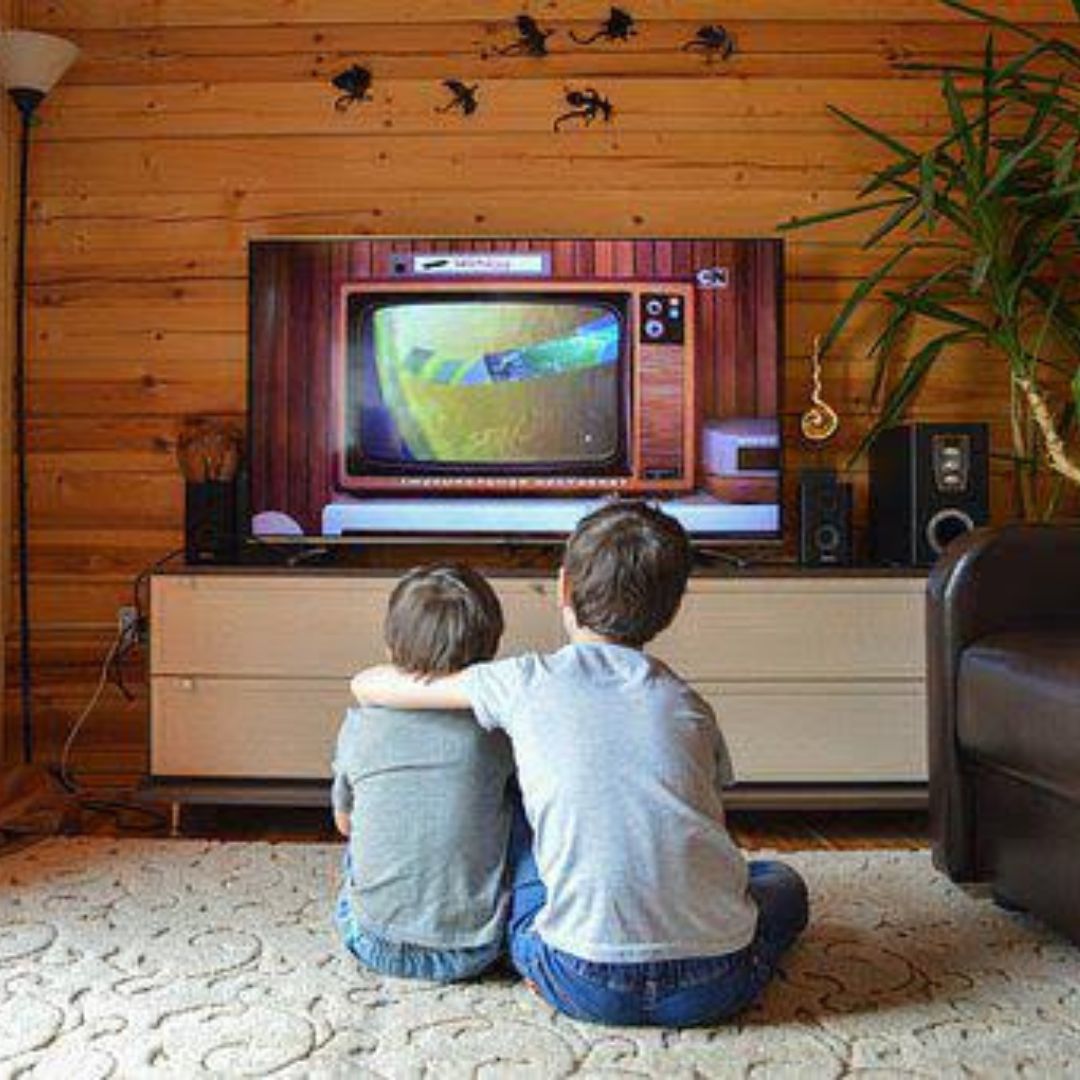
Image Credits: Pixabay (Representational)
Velma, Peppa Pig, Thomas & Friends: Here's How Cartoons Are Coming To Terms With Inclusive Representation For Children
Writer: Laxmi Mohan Kumar
She is an aspiring journalist in the process of learning and unlearning many things. Always up for discussions on everything from popular culture to politics.
Others/World, 9 Oct 2022 7:03 AM GMT | Updated 9 Oct 2022 7:12 AM GMT
Editor : Shiva Chaudhary |
A post-graduate in Journalism and Mass Communication with relevant skills, specialising in content editing & writing. I believe in the precise dissemination of information based on facts to the public.
Creatives : Laxmi Mohan Kumar
She is an aspiring journalist in the process of learning and unlearning many things. Always up for discussions on everything from popular culture to politics.
As several cartoon fans celebrate Scooby Doo's character Velma coming out as a lesbian, here's looking back at how cartoons brought inclusivity and positive representations of different communities for the children to learn and grow watching.
The year 2022 celebrated several inclusive characters appearing in cartoons widely watched by children. Characters belonging to the LGBTQ+ community, those with special needs, and a lot more representations that were earlier subtly portrayed through mainstream entertainment are now openly being celebrated.
Among the recent examples of this is Velma from the Scooby Doo series. The bespectacled, nerdy crime-solving heroine has officially been announced as a lesbian. The announcement did not come across as much of a surprise for the fans, who had already guessed her sexual identity through the subtle cues throughout the show.
However, the revelation was considered huge as the character has been a household name and a classic pop culture since 1969.
It is also considered a win because earlier in the 2000s, James Gunn had hinted that he had initially scripted Velma's character to be explicitly gay, but the studio kept "watering it down". Today, even Google celebrates Velma coming out with a splash of confetti and pride flags spread across the search page soon after the name "Velma" is typed in.
However, amidst all this, it becomes important to look into how such positive and inclusive representations impact children and how they perceive the world around them.
TV, Internet & Endless Loop Of Media Exposure
Media exposure is something that has been equated with the "Magic Bullet" theory to represent how viewers consume media. According to this theory, the media's message is similar to a bullet fired from the "media gun" that penetrates into the viewer's head. Media's impact has long been debated and proven through similar theories and experiments, as looked up on Wikipedia.
In terms of children, the impact is a lot more as they are considered sponges that assimilate everything that is happening around them. This is also why it is considered to showcase positive and inclusive representations to children from a young age when they formulate a view of the world around them.
Cartoons, in particular, constitute a huge part of many people's childhood and have been attributed to aiding a child's brain development both positively and negatively. Some of the positive impacts include improved language acquisition, understanding of society, cognitive development, and so on. The exact opposite impact occurs when they have exposure to limited representations.
Inclusive Representation Will Continue To Matter At Any Age
Another thing about representation is that apart from building one's worldview, it also helps one create their self-image and understand the different identities around them.
For this reason, many have advocated for kids' entertainment shows to normalise characterisations with different sexual identities and capacities to help the children feel represented. In 2018, when Spiderman: Into the Spiderverse introduced a biracial teen named Miles Morales as the protagonist, many kids rejoiced over the shift from the usual series of white men portraying superheroes who save the day.
Way before spiderman too, there were multiple series and movies that represented characters from different ethnic groups, different abilities, identities, and so on. However, it was surprising for many to watch a role conventionally played by a British teen being enacted by a boy who looked like someone a lot more school-going children could relate with. All of these aspects are imperative to help children understand the diversity they live amongst.
How Cartoons Are Adapting An Inclusive Space?
A character that went by without much discussion in the earlier times was "HIM" from Powerpuff Girls. Him was among the few characters that broke past the gender binary, and even though the problematic idea of queer-coded villains was reinforced, it was among the representations that were received by children at that point in time.
It gradually paved the way for a change in perspective, and today we celebrate lesbian weddings through widely acclaimed cartoons such as We Bare Bears. These cartoons have showcased a vast spectrum of people to children and have taught them to be more empathetic and accepting. It has also reassured many kids that it is okay to be themselves and that there are many more people like them in the world.
We Bare Bears, created by Asian-American Daniel Chong, happens to be an apt example of building representation. The creator often received questions about why the bears were being treated terribly by some humans, to which he responded via a tweet "My response is it has always been evident to me, as an Asian American, that some individuals are treated unfairly for no other reason than looking differently. And although the premise is three Bears trying to fit into human society and is a largely comic one, it is to me an allegory for what it feels like to be a minority in America".
So while the show's diversity is not on the face, it is enough to have made many wonder why such terrible treatment existed.
Sensitizing Kids On An Important Issue
A few other shows that also proudly introduced their different characters were Peppa Pig and Thomas and Friends. Peppa Pig is a popular animated show that introduces new friends in every new series. One such character that they brought along was Mandy Mouse, a star basketball player who uses a wheelchair. The move was applauded by many for its responsible representation.
Squeak! Introducing the newest member of the playgroup, Mandy Mouse! 🐭 pic.twitter.com/cwMy8vFuVS
— Peppa Pig Official (@peppapig) April 3, 2019
In one episode, Peppa is seen kindly asking Mandy if she requires any help to go up the hill in her wheelchair. It showed how important consent was and also showed the agency and capabilities Mandy had by showing her go up the hill on her own.
This was a great opportunity for many parents to begin a conversation and sensitise kids about disabilities, and many appreciative parents lauded the move.
My little girl has a wheelchair and she spotted this character in the "Peppa goes to London" book yesterday! Great that she's going to be a regular character
— Nic (@Shendlegirl) April 3, 2019
This is amazing 😍 Thank you for being inclusive. It's so awesome to see a wheelchair user in any show, but it's definitely important for children to see disability so it becomes the norm. Also her chair looks like mine 😊
— 🍁 Kimberley 🍁 (@KimmieChan1995) April 7, 2019
Similarly, the series also introduced same-sex parents in an episode titled "Families". A pair of lesbian polar bears were brought in this episode after a petition to include a same-sex family had received nearly 24,000 signatures, as per a report by the Economic Times.
'Unique Perspective On The World'
Thomas and Friends also joined the wagon and brought their first autistic character, Bruno the Brake Car. Voiced by nine-year-old autistic actor Elliott Garcia, the autistic character is shown to be rolling in reverse at the end of the train and carries along a "unique perspective on the world".
The train loves schedules, routines, and timetables and has times when he expresses emotions of worry and excitement by "flapping his ladders". The character also wears ear defenders to protect himself from loud noise, and these are small elements that add to how a child can understand and empathise with others better.
Children's television has been pushing its boundaries to bring in a diverse set of representations onscreen, and it would hopefully soon translate into a new generation that's accepting of the differences and similarities.
Also Read: "Women Should Be Represented As Equals": UNESCO Urges Govts To Impart Gender-Sensitive Education
 All section
All section














